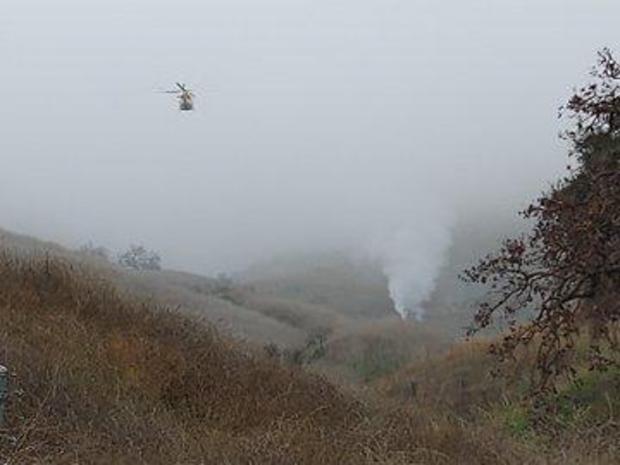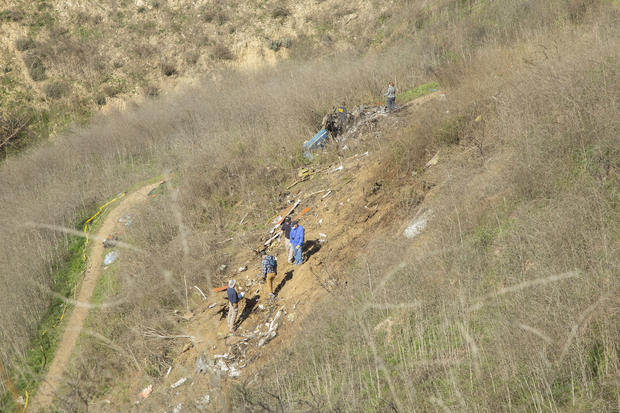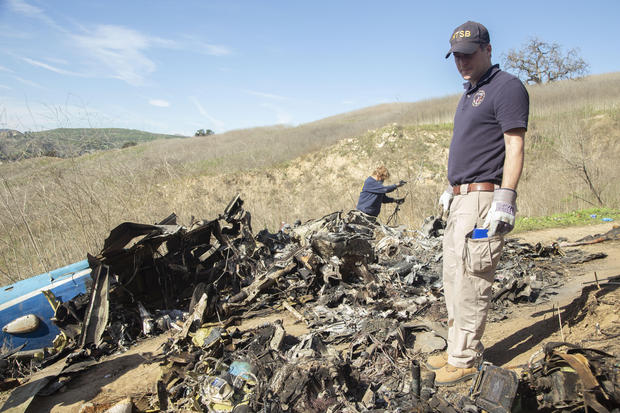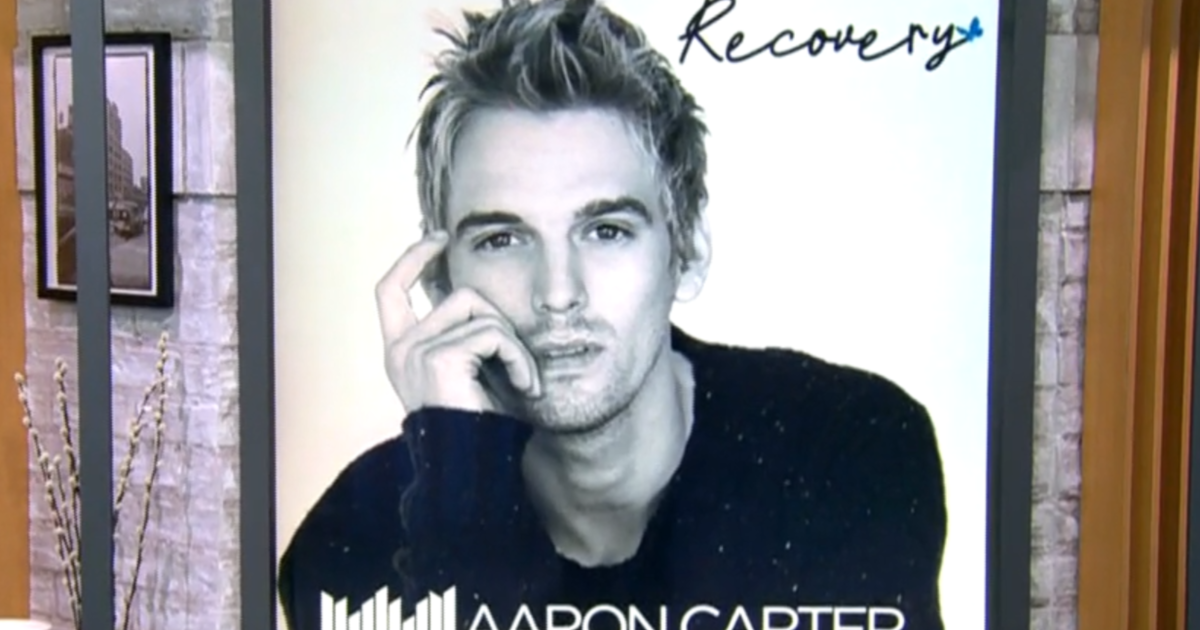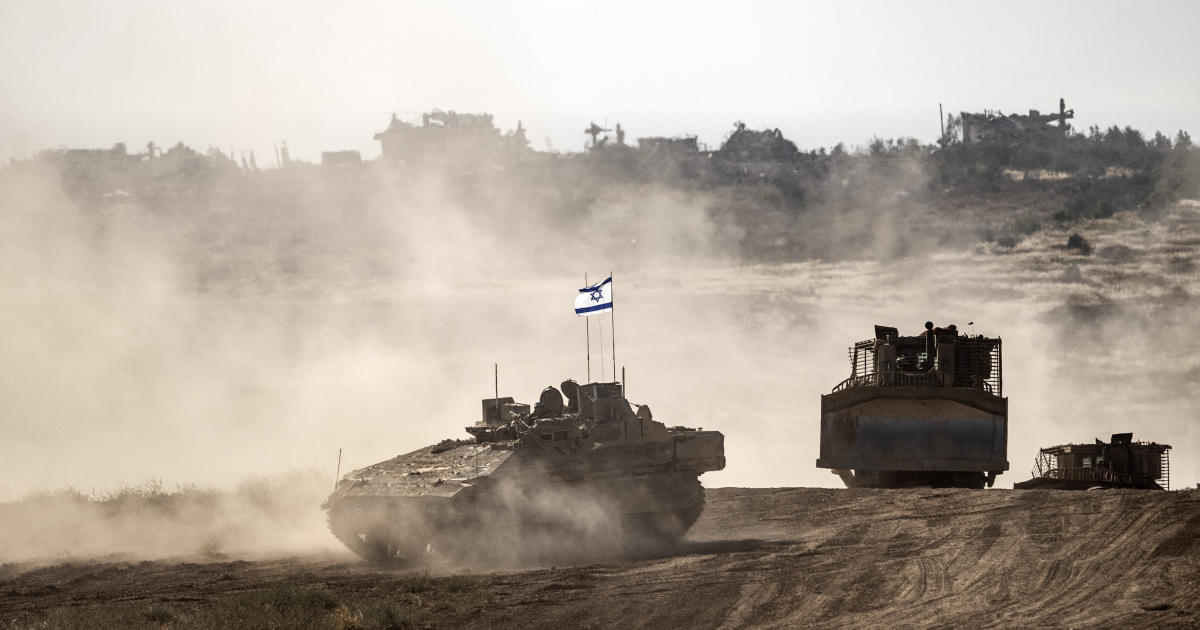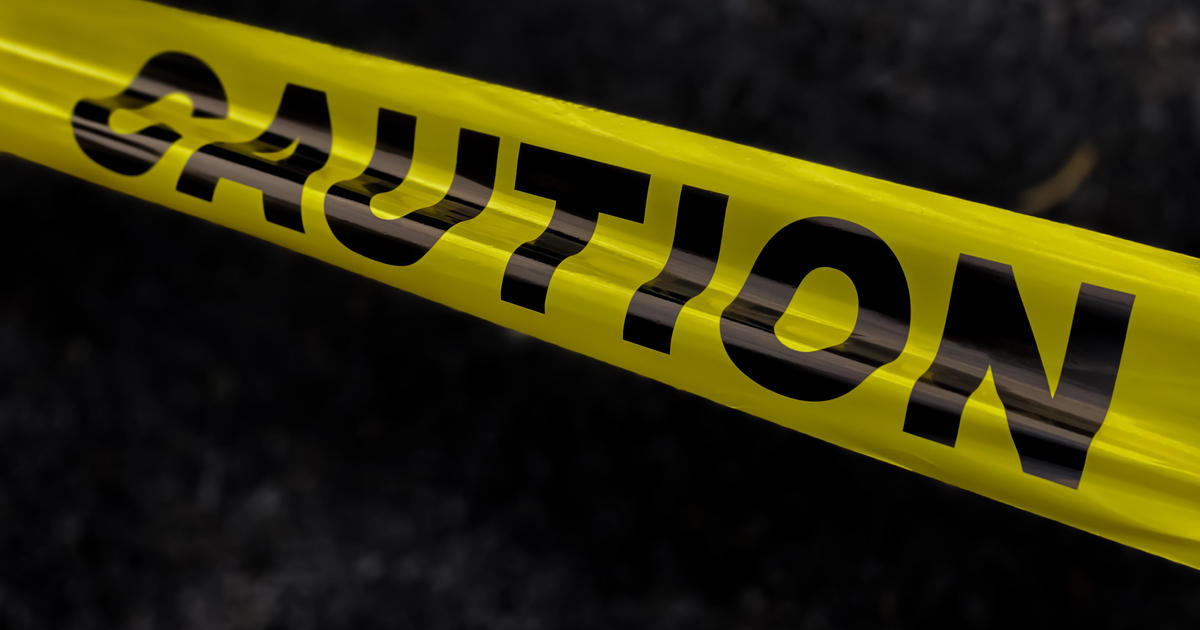What we know about Kobe Bryant's final flight
The helicopter ride that ended in the death of NBA legend Kobe Bryant, his 13-year-old daughter Gianna, and seven other people on Sunday morning lasted only 39 minutes. Investigators are still piecing together what happened during that final flight, here's what we know so far.
The helicopter took off at 9:06 a.m. from John Wayne Airport near Irvine in Orange County, California. In addition to Bryant and his daughter, on board were pilot Ara Zobayan, John Altobelli, Keri Altobelli, and their daughter Alyssa Altobelli, as well as Christina Mauser, Sarah Chester, and her daughter Payton Chester. The Los Angeles County Department of Medical Examiner-Coroner announced Tuesday that all nine bodies have been recovered.
The group was headed for a youth basketball tournament in Calabasas. Alyssa, Payton, and Gianna were all on the same basketball team.
The last transmission from Zobayan came in at about 9:44 a.m. He radioed air traffic control that he was going to "go above the layer" of clouds he was evidently encountering. A minute later, the helicopter first climbed then plunged more than 1,000 feet into the hillside, killing all nine people.
There was heavy fog over the region that morning. The cloud cover was so bad that news helicopters in Los Angeles were silent, and the LA Police Department's fleet of helicopters — the largest law enforcement helicopter fleet in the country — were all grounded. The LA County Sheriff's Department had also halted flight operations for its helicopter fleet, based farther south in Long Beach.
According to Los Angeles Sheriff Alex Villanueva, their helicopters do not take off if there is less than 2,000 feet visibility.
"If there's low visibility they won't take off cause it's not safe," Villanueva told reporters Monday. "They do not do the instrumentation flight, you have to do visual flight only. So if it's less than 2,000 feet visibility, they're just not taking off."
The poor flight conditions have led to lingering questions as to why Bryant's helicopter made the flight all, and why it continued on its path as the weather worsened and visibility dropped.
According to preliminary flight data posted by flightradar24.com, everything appeared normal as the helicopter flew north from Irvine. Cruising over the greater Los Angeles area, Zobayan was flying at a basic minimum of three miles visibility. But, as the helicopter approached Burbank Airport, just north of Los Angeles, weather conditions deteriorated.
"We're not just focusing on weather here," Nation Transportation Safety Board Member Jennifer Homendy said at a press conference on Monday. "We're looking at man, machine, and the environment, and weather is just a small portion of that."
Pilot decision making is one of the many factors that will be scrutinized by the NTSB.
According to investigators, at the start of the flight, Zobayan was operating under "visual flight rules," or VFR. About 14 minutes into the flight, around 9:20 a.m., he asked air traffic control for "special VFR on the 101 westbound."
Special visual flight rules are an air traffic control authorization that allows an aircraft to proceed through controlled airspace at less than the basic VFR minimums (1,000-foot cloud ceiling, and three miles visibility). Reduced visibility, as well as reduced altitude from a lower cloud ceiling, could prompt a pilot to fly under special VFR. By choosing special VFR, however, the pilot is accepting some added risk and a reduced margin for error.
Air Traffic Controllers at Burbank Airport advised Zobayan the helicopter would have to hold over Glendale due to airplane traffic around the airport. The chopper then circled for about 12 minutes, before being cleared for special VFR flight through Burbank and Van Nuys Airport airspace at 1,400 feet.
Both airports had switched to the instrument required landing, known as ILS, due to the deteriorating weather conditions as the helicopter approached Glendale.
By 9:40 a.m., the helicopter turned southwest to pick up the 101 freeway and follow it to the Camarillo Airport, west of Calabasas. Zobayan then requested something known as "flight following."
"Flight following is radar assistance for the flight and helps the pilot avoid traffic," Homendy explained. "It's communication between air traffic control and the pilot."
According to Homendy, air traffic control told Zobayan he was too low to provide flight following assistance.
"2-echo-x-ray you're still too low level for flight following at this time," an air traffic controller is heard on liveatc.net's recording of the flight, referring to the helicopter by its tail number.
The helicopter was flying at about 1,450 feet as it moved over the San Fernando Valley and picked up the 101 freeway heading north toward Camarillo.
Four minutes later, at 9:44, Zobayan radioed ATC to let them know he had started to climb in order to get above the cloud cover. Flight data shows he climbed to 2,300 feet and began a left descending turn.
As he climbed to 2,300 feet, Zobayan would have put the helicopter into the very clouds he was trying to avoid, potentially blinding the pilot. Visibility would have gone to nearly zero and he would have lost a visual reference point.
Investigators believe that John F. Kennedy Jr. became spatially disoriented while flying in bad weather conditions before he lost control of his plane and crashed into the ocean in 1999; killing himself, his wife Carolyn Bessette, and her sister Lauren Bessette.
Zobayan was an experienced pilot with more than 8,200 flight hours. He was also an instrument-rated pilot, meaning he had experience with the procedures for flying in bad weather conditions. His decision to climb through the clouds would mean departing from VFR flying, which may have stepped outside his company's standard operating procedures.
"My understanding is that the company operates under VFR," meaning their standard procedure would be to stick to normal visual flight rules only, Homendy told CBS. "We'll look at whether there were other options… we'll have to look at that."
After announcing his climb, air traffic control tried to reach the pilot.
"2-echo-x-ray SoCal," was the last piece of ATC audio of the ill-fated flight.
"When ATC asked what the pilot planned to do, there was no reply," Homendy said.
By then the chopper appears to have already been in a dive. The helicopter descended rapidly for the final 12 seconds of the flight — hitting a rate of nearly 5,000 feet per minute. The last recorded speed was about 184 miles an hour.
There is no evidence of any distress call.
The helicopter, a Sikorsky S-76B, is a well-respected aircraft with a strong safety record. Bryant's exact helicopter was formerly owned by the state of Illinois and flew former governor Rod Blagojevich.
Since 2008 the NTSB investigated just two other incidents involving this model of aircraft.
When it hit the hillside, the helicopter left an impact crater and scattered debris, sparking a fire and killing everyone on board.
"It was a pretty devastating accident scene," Homendy said.
The helicopter does not have a black box, and, between the force of the impact and post-crash fire, the wreckage is not in good shape.
Once the coroner has finished its work at the scene, NTSB will begin to remove wreckage from the scene. The NTSB said it expects it will need to use a helicopter to do that, as the rugged terrain makes moving the key evidence like the chopper's engines challenging.
Investigators hope to recover and analyze flight tools on the pilot's iPad, which contained piloting and weather apps, and are scouring the scene for other electronic devices, such as passenger smartphones and any of the cockpit avionics that may store flight data.
The NTSB is also calling for the public to send in any pictures or video of the weather conditions in the area at the time of the crash.
It is too early to speculate on the cause of the crash. Investigators will seek to understand if the weather, pilot decision making, a mechanical issue, or some other circumstance contributed to the tragedy.
An aviation accident never has one single cause. Instead, investigators will determine the chain of events that lead to disaster.
"We do this all the time. The wreckage is just a part of the investigation," Homendy said. "I'm very confident we will determine the cause of the accident."
